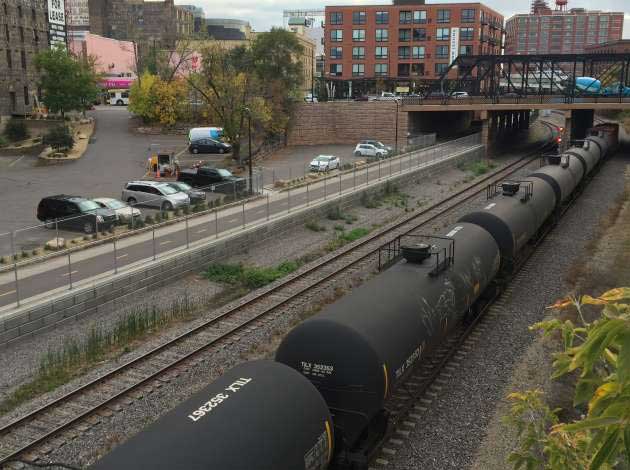
Bill would mandate more transparency from railroads
By SARAH MCKENZIE : The Journal : APRIL 8, 2016
The measure, sponsored by state Rep. Frank Hornstein (DFL-61A), requires railroads to provide more detailed information to state and local officials, including schedules for the transport of hazardous materials, inspection reports for bridges that have hazardous rail cargo traffic and detailed emergency response plans in the event of a derailment. It also increases the number of state rail inspectors from four to six.
It expands on legislation addressing the safety of oil trains in 2014. A companion bill is also moving forward in the Senate.
“Emergency managers and first responders know the risks of transporting oil, ethanol and hazardous materials though Minneapolis neighborhoods and downtown,” Hornstein said. “It is only reasonable for the railroads to provide public safety officials with the information they need to keep our communities safe.”
Eric Waage, director of emergency management for Hennepin County, said it’s critical for local first responders to get access to that information from the railroads. So far, the information they have received has been minimal and too generic to be useful.
“Missing information creates a serious weakness in our ability to plan,” he said at a House Transportation Policy and Finance Committee hearing April 6.
Coon Rapids Fire Chief John Piper said first responders need to have access to the railroads’ emergency plans, including information about the equipment they have and what personnel would respond to a disaster scene.
“We need that information to come up with a game plan to address what would be a major incident pretty much anywhere in the state of Minnesota,” Piper said.
Cathy Velasquez Eberhart, one of the founders of Citizens Acting for Rail Safety (CARS-Twin Cities), said the bill is a “common sense” way of improving the “safety, transparency and accountability of the railroads.”
Eberhart lives in the Como Park neighborhood of St. Paul near a number of rail lines, some carrying crude oil.
“These are trains going past our homes, our backyards, playgrounds, neighborhood schools, senior centers, daycares and so forth,” she said.
Sarah Erickson, a lobbyist for the Minnesota Regional Rail Association, said railroads have been proactive about training first responders and communicating with local officials.
She said an app has been developed that provides real time information in the event of a train accident and noted that railroad companies have trained more than 4,000 first responders in the past two years in Minnesota.
The discussion of improving rail safety comes in the wake of recent train accidents in the region, including the explosion of a tanker car in Callaway, Minn. after it collided with a train at an at-grade rail crossing.
In the fall, Gov. Mark Dayton expressed concerns about oil train traffic in downtown Minneapolis. He admonished BNSF for failing to alert local and state officials about the temporary reroute of oil train traffic on tracks that go under Target Field and through the North Loop and Nicollet Island.
Photo: A unit train in downtown Minneapolis. File photo

